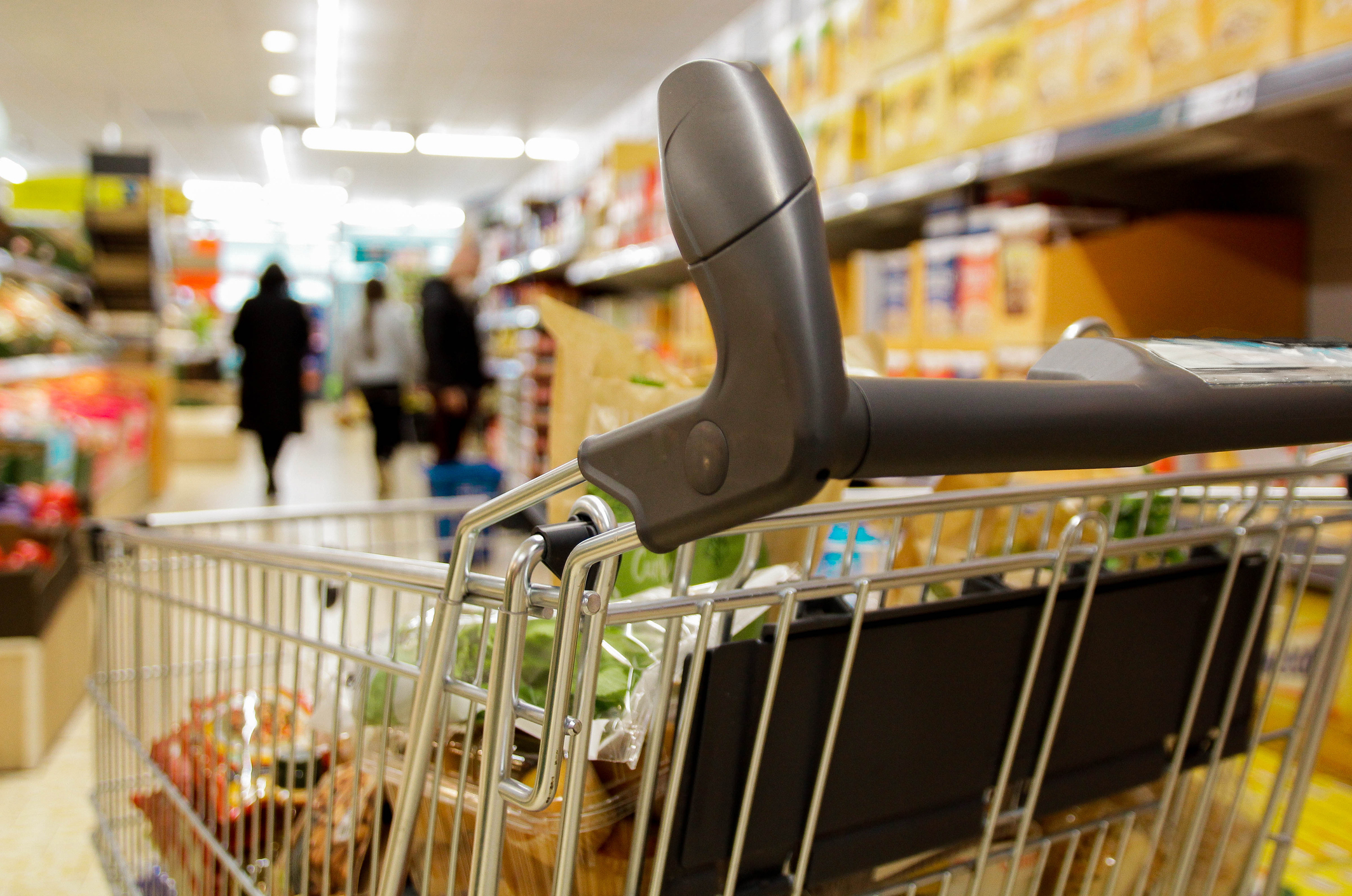UK supermarkets report bumper Christmas trading season
Tesco, Sainsbury’s and Ocado enjoyed a record festive period but will this feed into their share price?


UK supermarkets appear to have shaken off competition from discount rivals after reporting bumper Christmas results in a boost for investors.
Many shoppers have turned to lower-cost supermarket brands such a Aldi and Lidl amid high inflation and the cost of living crisis but Tesco, Sainsbury’s and Ocado have bucked the trend over Christmas as households splashed out during the festive period.
These brands have reported their “biggest ever Christmas".
MoneyWeek
Subscribe to MoneyWeek today and get your first six magazine issues absolutely FREE

Sign up to Money Morning
Don't miss the latest investment and personal finances news, market analysis, plus money-saving tips with our free twice-daily newsletter
Don't miss the latest investment and personal finances news, market analysis, plus money-saving tips with our free twice-daily newsletter
Tesco said like-for like-sales rose 3.8% over Christmas, with sales of food up by 4.7%, accompanied by a hike of 15.5% in its Finest range.
The supermarket giant has issued full-year guidance for adjusted operating profits of £2.9 billion.
Meanwhile, Sainsbury’s posted a 2.8% rise in underlying sales for its third quarter to 4 January, with grocery sales up 4.1%. The supermarket brand said this was driven by strong demand for party food, Champagne and sparkling wine.
However, general merchandise and clothing sales in Sainsbury's stores fell 0.1% and were down 1.4% for its Argos business.
It is predicting profits of £1.01 billion to £1.06 billion during 2025 and has even given staff a 5% pay rise.
Online supermarket brand Ocado, which has a delivery partnership with Marks & Spencer, is also celebrating a record Christmas, with revenue rising 17.5% during the fourth quarter at £715.8 million.Sales volumes also rose 17% during the quarter to 271.6 million items, while active customer numbers climbed 12.1% to 1.1 million.
This is echoed by data company Kantar which reported that household spending on take-home groceries hit a record high this Christmas at £460 on average.
Tesco was dubbed the supermarket winner, with growth across its convenience, superstore and online channels contributing to a 5% increase in sales over the 12 weeks to 29 December. Its 0.8 percentage point share gain was the biggest of any supermarket, taking its hold of the market to 28.5%, Kantar said.
Sainsbury’s achieved its highest market share since December 2019 at 16% after sales of 3.5%.
Kantar's analysis showed online spending in December reached a record £1.6 billion. This helped Ocado boost its sales by 9.6% over the 12 weeks to the end of December, taking its overall market share to 1.8%.
Despite these boosts, supermarket share prices remain under pressure as they continue to battle market competition and economic uncertainty as well as tax rises such as higher employer national insurance rates.
“The UK economy’s broader concerns still loom large,” says Mark Crouch, market analyst at investment platform eToro.
“Despite strong Christmas numbers, investors remain cautious, wary of the ongoing cost of living crisis and the potential economic slowdown.”
Despite share price pressure, the dividend yields are attractive at 3.47% for Tesco and 5.13% for Sainsbury’s, giving investors plenty of food for thought.
Should investors add supermarkets to their portfolio?
UK supermarkets such as Tesco and Sainsbury’s are FTSE 100 stalwarts.
You may not get massive share price growth but they pay regular dividends, which can help boost an investment portfolio.
However, their recent share price performance highlights volatility in the retail sector amid rising costs and pressure from discount rivals.
The Tesco share price is down 2.41 per cent year to date but up 21 per cent annually.
Sainsbury’s share price is down 6.92% year-to-date and by 10 per cent annually.
Ocado is down further, with its share price falling 51% in 2024 due to legal disputes and concerns about debts and its technology rollout.
Crouch said Ocado shareholders have had a "miserable few years."
He added: "More will be needed to recapture the dizzy heights of 2020, as the cold hard truth is that despite all the prospects and potential, Ocado has yet to deliver consistent profitability.
“While profitability could set in quickly, there are growing murmurs that perhaps Marks & Spencer—who have a business partnership with Ocado and have demonstrated an astonishing turnaround over the last two years—should have more control to increase those odds. If Ocado’s shares don’t start performing soon, shareholders may begin calling for it as well.”
Lucy Rumbold, equity research analyst at Quilter Cheviot says that while the top-line Christmas numbers for Tesco and Sainsbury’s may seem impressive, investors remain cautious about the outlook for the sector.
“The key challenge for listed supermarkets lies in the mounting cost pressures they face. Wage increases and higher National Insurance contributions are eating into profits,” she says.
“For example, its expected Tesco will see around £400 million in additional costs from these factors alone, effectively neutralising much of its £500 million annual cost-saving programme.
"Despite reiterating its profit guidance of £2.9 billion, the market had hoped for an upgrade, and this lack of optimism is weighing on sentiment."
Rumbold says the broader economic uncertainty also poses risks.
She adds: “The retail sector, especially supermarkets, is heavily exposed to UK-centric factors, including inflation, consumer confidence, and the potential for further tax increases. This makes investors wary of committing to stocks that rely so heavily on domestic spending.”
One factor on the side of brands such as Tesco and Sainsbury’s is that higher-income households are better positioned to absorb inflationary pressures and continue spending, Rumbold suggests, whereas budget retailers are feeling the pinch from their customer base being more heavily impacted by rising costs.
She adds: “For investors, Tesco and Sainsbury's remain well-managed businesses. Tesco, in particular, has demonstrated its ability to stabilise performance through operational efficiencies and strong Christmas trading.
"However, with rising costs and a lack of significant growth catalysts, these stocks may feel like they are running hard just to stand still.”
Get the latest financial news, insights and expert analysis from our award-winning MoneyWeek team, to help you understand what really matters when it comes to your finances.

Marc Shoffman is an award-winning freelance journalist specialising in business, personal finance and property. His work has appeared in print and online publications ranging from FT Business to The Times, Mail on Sunday and the i newspaper. He also co-presents the In For A Penny financial planning podcast.
-
 Why Trustpilot is a stock to watch for e-commerce exposure
Why Trustpilot is a stock to watch for e-commerce exposureTrustpilot has built a defensible position in one of the most critical areas of the internet: the infrastructure of trust, says Jamie Ward
-
 Tetragon Financial: An investment trust with stellar returns
Tetragon Financial: An investment trust with stellar returnsTetragon Financial has performed very well, but it won't appeal to most investors – there are clear reasons for the huge discount, says Rupert Hargreaves